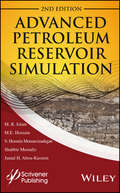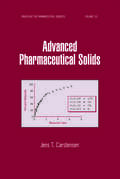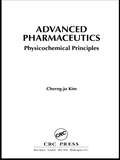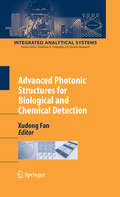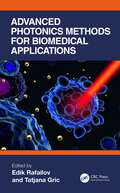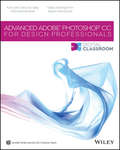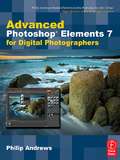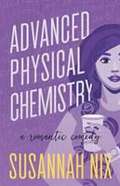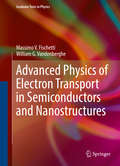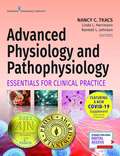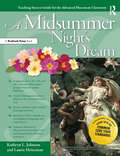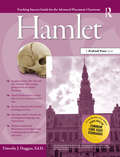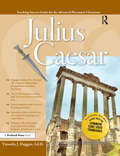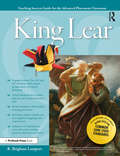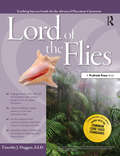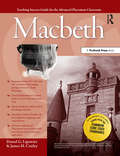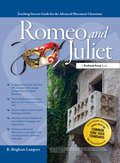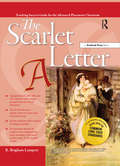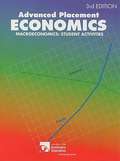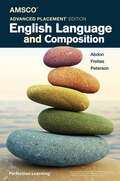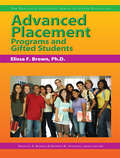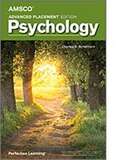- Table View
- List View
Advanced Petroleum Reservoir Simulation: Towards Developing Reservoir Emulators
by M. R. Islam M. E. Hossain S. Hossien Mousavizadegan Jamal H. Abou-Kassem Shabbir MustafizThis second edition of the original volume adds significant new innovations for revolutionizing the processes and methods used in petroleum reservoir simulations. With the advent of shale drilling, hydraulic fracturing, and underbalanced drilling has come a virtual renaissance of scientific methodologies in the oil and gas industry. New ways of thinking are being pioneered, and Dr. Islam and his team have, for years now, been at the forefront of these important changes. This book clarifies the underlying mathematics and physics behind reservoir simulation and makes it easy to have a range of simulation results along with their respective probability. This makes the risk analysis based on knowledge rather than guess work. The book offers by far the strongest tool for engineers and managers to back up reservoir simulation predictions with real science. The book adds transparency and ease to the process of reservoir simulation in way never witnessed before. Finally, No other book provides readers complete access to the 3D, 3-phase reservoir simulation software that is available with this text. A must-have for any reservoir engineer or petroleum engineer working upstream, whether in exploration, drilling, or production, this text is also a valuable textbook for advanced students and graduate students in petroleum or chemical engineering departments.
Advanced Pharmaceutical Solids (Drugs and the Pharmaceutical Sciences)
by Jens T. CarstensenThis extensive reference/text explores the principles, instrumentation, processes, and programs of pharmaceutical solid science as well as new aspects on one-component systems, micromeritics, polymorphism, solid-state stability, cohesion, powder flow, blending, single- unit sustained release, and tablet coating.Reveals unique approaches in phar
Advanced Pharmaceutics: Physicochemical Principles
by Cherng-ju KimDiscussing a comprehensive range of topics, Advanced Pharmaceutics: Physicochemical Principles reviews all aspects of physical pharmacy. The book explains the basic, mechanistic, and quantitative interpretation skills needed to solve physical pharmacy related problems. The author supplies a strong fundamental background and extensively covers therm
Advanced Photon Counting: Applications, Methods, Instrumentation (Springer Series on Fluorescence #15)
by Peter Kapusta Michael Wahl Rainer ErdmannThis volume focuses on Time-Correlated Single Photon Counting (TCSPC), a powerful tool allowing luminescence lifetime measurements to be made with high temporal resolution, even on single molecules. Combining spectrum and lifetime provides a "fingerprint" for identifying such molecules in the presence of a background. Used together with confocal detection, this permits single-molecule spectroscopy and microscopy in addition to ensemble measurements, opening up an enormous range of hot life science applications such as fluorescence lifetime imaging (FLIM) and measurement of Förster Resonant Energy Transfer (FRET) for the investigation of protein folding and interaction. Several technology-related chapters present both the basics and current state-of-the-art, in particular of TCSPC electronics, photon detectors and lasers. The remaining chapters cover a broad range of applications and methodologies for experiments and data analysis, including the life sciences, defect centers in diamonds, super-resolution microscopy, and optical tomography. The chapters detailing new options arising from the combination of classic TCSPC and fluorescence lifetime with methods based on intensity fluctuation represent a particularly unique highlight.
Advanced Photonic Structures for Biological and Chemical Detection (Integrated Analytical Systems)
by Xudong FanThis book is a part of Books Series on Integrated Microanalytical Systems. It discusses the latest applications of photonic technologies in bio-chemical sensing. Based on the photonic structures, the book is divided into four sections: Photonic crystal structures; Optical microring resonator structures; Optical fiber/waveguide structures; and, Miscellaneous or hybrid structures.
Advanced Photonics Methods for Biomedical Applications
by Tatjana Gric Edik RafailovAdvanced photonics methods for biomedical applications give researchers in universities and industries, and clinicians an overview of the novel tools for cancer diagnostics and treatment. This book provides researchers and professionals in the area of biomedical photonics with a toolbox of novel methodologies for biomedical applications, including health diagnostics, cancer detection, and treatment. It covers the theory, modeling, and design of each method, alongside their applications, fabrication, characterization, and measurements in clinical practice. A wide scope of concepts concerning innovative science and technologies of medicine will be covered, providing the readers with the latest research, developments, and technologies. It will also be a valuable resource for students and early-career researchers, alongside those involved in the design of the novel photonics-based techniques for health diagnostics and cancer detection and treatment. Key features • Discusses novel methods of cancer diagnostics and cancer treatment. • Details non and minimally invasive photonics techniques. • Explores the applications of machine learning and artificial intelligence to these novel techniques.
Advanced Photoshop CC for Design Professionals Digital Classroom
by Jennifer Smith Agi Creative TeamTake your Photoshop CC skills to the next level with this complete, advanced training packageAdobe Photoshop is the industry leading image-editing program for digital photographers, graphic designers, and web developers. The newest version includes even more great tools to manage and enhance your images. This book-and-DVD package focuses on using the more advanced Photoshop CC features such as curves, levels, blending modes, painting and drawing tools, and the latest special effects to create professional-quality designs and images for web and video. You can learn at your own pace, using the step-by-step instructions in the book and supplementary exercises on the DVD. Encourages you to develop your skills in the program's finer points with these 13 self-paced lessons developed by the AGI Creative TeamFeatures illustrated, step-by-step instructions plus video tutorials and lesson files, all created by expert instructorsCovers Adobe Bridge and Camera RAW, then focuses on advanced techniques including curves, levels, blending modes, painting and drawing tools, and the latest Photoshop CC special effectsEnables web developers and graphic designers to make full use of the advanced features of Photoshop CC (Creative Cloud)Advanced Photoshop CC Digital Classroom takes your Photoshop CC skills a step further, giving you more control over your images.Note: DVD and other supplementary materials are not included as part of the e-book file, but are available for download after purchase.
Advanced Photoshop Elements 7 for Digital Photographers: Advanced Photoshop Elements 7 for Digital Photographers
by Philip AndrewsThis essential guide for intermediate/advanced photographers has now been fully updated for Elements 7. Bestselling author and Elements guru Philip Andrews turns his expansive knowledge to this powerful application, delivering, once again, a practical approach in a crystal-clear writing style. For the advanced Elements user, this book offers a standalone guide to advancing knowledge of the software. For those with a little less experience, it works seamlessly in conjunction with Philip's other Elements guide: "Adobe Photoshop Elements 7: A visual introduction to digital photography". Philip expands on the solid foundation delivered by that title to deliver a master-guide that shows you just how powerful this deceptively simple software package can be. Throughout the book, Philip takes a pro's approach, emphasising a streamlined, non-destructive workflow. Diverse chapters cover the entire spectrum of photographic potential offered by the software, including key areas such as: darkroom techniques, advanced selection techniques, professional retouching, photo restoration, panoramas, collages, RAW processing and printing. Additionally, the content is supplemented by extra great learning tools available on a brand new website including; downloadable resources, and Elements vodcasts. Essential reading for all photographers using Elements 7.
Advanced Physical Chemistry: A Romantic Comedy
by Susannah Nix<p>After four lousy boyfriends in a row, chemical engineer Penny Popplestone swears off men until she can figure out why they keep cheating on her. But her no-men resolution hits a snag when the mysterious and superhumanly hot barista at her favorite coffee shop strikes up a friendship with her. <p>Penny strives to keep things platonic, but when Caleb gives her the kiss of her life, she realizes he wants to be more than just friends. Tired of always being "good little Penny," she throws caution to the wind and pursues a no-strings fling with the hottie barista. It's not like they have anything in common beyond scorching physical chemistry, so what does she have to lose? <p>Only her heart. <p>Now, this fanfic-reading, plus-size heroine faces an unsolvable problem. What do you do when being apart is unbearable...but being together is impossible? <p>Advanced Physical Chemistry is the third in a series of standalone rom-coms featuring geeky heroines who work in STEM fields.</p>
Advanced Physics of Electron Transport in Semiconductors and Nanostructures: Electronic Properties And Transport (Graduate Texts in Physics)
by Massimo V. Fischetti William G. VandenbergheThis textbook is aimed at second-year graduate students in Physics, Electrical Engineering, or Materials Science. It presents a rigorous introduction to electronic transport in solids, especially at the nanometer scale. Understanding electronic transport in solids requires some basic knowledge of Hamiltonian Classical Mechanics, Quantum Mechanics, Condensed Matter Theory, and Statistical Mechanics. Hence, this book discusses those sub-topics which are required to deal with electronic transport in a single, self-contained course. This will be useful for students who intend to work in academia or the nano/ micro-electronics industry. Further topics covered include: the theory of energy bands in crystals, of second quantization and elementary excitations in solids, of the dielectric properties of semiconductors with an emphasis on dielectric screening and coupled interfacial modes, of electron scattering with phonons, plasmons, electrons and photons, of the derivation of transport equations in semiconductors and semiconductor nanostructures somewhat at the quantum level, but mainly at the semi-classical level. The text presents examples relevant to current research, thus not only about Si, but also about III-V compound semiconductors, nanowires, graphene and graphene nanoribbons. In particular, the text gives major emphasis to plane-wave methods applied to the electronic structure of solids, both DFT and empirical pseudopotentials, always paying attention to their effects on electronic transport and its numerical treatment. The core of the text is electronic transport, with ample discussions of the transport equations derived both in the quantum picture (the Liouville-von Neumann equation) and semi-classically (the Boltzmann transport equation, BTE). An advanced chapter, Chapter 18, is strictly related to the 'tricky' transition from the time-reversible Liouville-von Neumann equation to the time-irreversible Green's functions, to the density-matrix formalism and, classically, to the Boltzmann transport equation. Finally, several methods for solving the BTE are also reviewed, including the method of moments, iterative methods, direct matrix inversion, Cellular Automata and Monte Carlo. Four appendices complete the text.
Advanced Physiology and Pathophysiology: Essentials for Clinical Practice
by Nancy Tkacs Linda Herrmann Randall JohnsonSpecifically designed for future healthcare providers who will diagnose, manage, and prescribe <p><p> This advanced physiology and pathophysiology text is designed to address the specific learning needs of future nurse practitioners, physician assistants, and other advanced healthcare providers caring for patients across the lifespan. Focusing on practical applications of physiology, it facilitates in-depth understanding of important pathophysiological concepts as they relate to major disorders commonly seen in clinical practice and includes comprehensive pediatric and geriatric considerations. This knowledge is crucial to providing the foundation required to be an informed and confident clinical decision maker. <p><p> The author team includes experienced clinicians and educators: nurses and nurse practitioners, physician assistants, doctors of pharmacy, physicians, and basic scientists. This collaboration has produced a text that carefully details and richly illustrates the cellular structure and function of each organ system and mechanisms of associated major clinical disorders. Uniquely interweaving aspects of organ function during healthy states with disease-associated changes, the text emphasizes and extends the basic science foundation to practical clinical applications. The text promotes a deep understanding of cellular function in health and disease that provides the bedrock knowledge required to master pharmacology for prescriptive practice. Equally important, the solid foundation of applied pathophysiological mechanisms offered in this text prepares the student clinician to care for patients with a broad variety of disorders. This resource not only provides a deep dive into pathophysiology, but it also examines why patients often present with particular symptoms, the rationale for ordering specific diagnostic tests and interpretation of results, and common management strategies that proceed from the underlying pathophysiology.
Advanced Placement Classroom: A Midsummer Night's Dream (Teaching Success Guides For The Advanced Placement Classroom Ser. #0)
by Kathryn L. Johnson Laurie HeinemannAdvanced Placement Classroom: A Midsummer Night's Dream takes students inside Shakespeare's well-loved comedy by providing teachers and students with a detailed overview of the play, along with interesting and challenging activities geared for the advanced language arts student. Students will examine Shakespeare's inventive language by collecting words and phrases to use later in a “Sweet-Talk Challenge,” akin to a modern-day poetry slam; discover the history behind the play by researching and giving presentations on Elizabethan occupations; and recognize the challenge of performance by reenacting scenes.Prufrock's new line of innovative teaching guides for the Advanced Placement classroom is designed to engage students with creative learning activities that ensure Advanced Placement success. The Teaching Success Guide for the Advanced Placement Classroom series helps teachers motivate students above and beyond the norm by introducing investigative, hands-on activities including debates, role-plays, experiments, projects, and more, all based on Advanced Placement and college-level standards for learning.Grades 7-12
Advanced Placement Classroom: Hamlet
by Timothy J. DugganPart of Prufrock's new series for the upper level classroom, Advanced Placement Classroom: Hamlet allows teachers to take a fresh approach on one of Shakespeare's most famous plays, by moving beyond basic history and memorization of quotes. Students will study cultural variations of the Hamlet story, recreate the tale's events in a news show format, rewrite scenes using modern-day perspectives, and create their own blogs to discuss the play's relationship to contemporary life. The author also provides easy-to-use discussions of Shakespeare's life and times and the ways Hamlet can be studied from a critical perspective.Prufrock's new line of innovative teaching guides is designed to engage students with creative learning activities that ensure Advanced Placement success. The Teaching Success Guide for the Advanced Placement Classroom series helps teachers motivate students above and beyond the norm by introducing investigative, hands-on activities including debates, role-plays, experiments, projects, and more, all based on Advanced Placement and college-level standards for learning. Grades 7-12
Advanced Placement Classroom: Julius Caesar
by Timothy J. DugganThe Teaching Success Guide for the Advanced Placement Classroom series helps teachers motivate students above and beyond the norm by introducing investigative, hands-on activities, including debates, role-plays, experiments, projects, and more, all based on Advanced Placement and college-level standards for learning.Julius Caesar allows teachers to take a fresh approach to one of Shakespeare's most famous plays by moving beyond basic history and memorization of quotes. Students will engage in performance approaches to the text, recreate the story's events in a news show format, participate in collaborative literature workshop activities, and debate whether Caesar could have prevented his assassination. The author also provides easy-to-use discussions of Shakespeare's language and how Julius Caesar can be studied from different critical perspectives.Grades 7-12
Advanced Placement Classroom: King Lear (Teaching Success Guides For The Advanced Placement Classroom Ser. #0)
by R. Brigham LambertThe Teaching Success Guide for the Advanced Placement Classroom series helps teachers motivate students above and beyond the norm by introducing investigative, hands-on activities, including debates, role-plays, experiments, projects, and more, all based on Advanced Placement and college-level standards for learning.King Lear is a user-friendly guide to teaching one of Shakespeare's classic plays and includes field-tested and proven methods for assigning daily interpretive readings, leading intriguing seminar discussions, and connecting the play to modern-day poetry and social media platforms, plus many more resources for enhancing the study of Shakespeare in Advanced Placement and pre-AP courses.Grades 7-12
Advanced Placement Classroom: Lord of the Flies (Teaching Success Guides For The Advanced Placement Classroom Ser. #0)
by Timothy J. DugganAdvanced Placement Classroom: Lord of the Flies takes a fresh approach to a school classic by offering an abundance of student-centered classroom ideas. A large menu of rigorous choices will engage both teachers and students in the process of building interpretations through close reading, collaboration, and active learning. Clearly explained prereading, reading, and post-reading tasks help students to develop their individual encounters with the text and then enter the conversation of literary scholars. Additional chapters explore the interface between the world of the text and the text in the world, including technology integration. Sample AP prompts and essay analyses are included. Grades 9-12
Advanced Placement Classroom: Macbeth (Teaching Success Guides For The Advanced Placement Classroom Ser. #0)
by James Conley Daniel G. LipowitzAdvanced Placement Classroom: Macbeth is a teacher-friendly resource for using one of Shakespeare's greatest tragedies in the Advanced Placement classroom. Students will examine the play critically and analytically to understand aspects such as the nature of villainy and the history of the events that inspired the play. An extended section provides teachers with information on societal implications that impacted the play's creation, including witchcraft and The Gunpowder Plot. Teachers also will be able to implement exciting hands-on projects such as putting Macbeth on trial for the murder of Banquo and developing a soundtrack for the play.Grades 7-12
Advanced Placement Classroom: Romeo and Juliet
by R. Brigham LampertPart of Prufrock's new series for the upper level classroom, Advanced Placement Classroom: Romeo and Juliet is a user-friendly guide to teaching one of Shakespeare's classic plays. Featuring more than 50 reproducible pages to supplement student projects, debates, and writings, this guide teaches students to consider new perspectives on the traditional tale. Teachers can implement day-to-day study of the play with intriguing journal prompts, introduce challenging critical thinking with lessons that put Juliet's nurse and Friar Lawrence on mock trial for their role in bringing together the lovers, and much more.Prufrock's new line of innovative teaching guides is designed to engage students with creative learning activities that ensure Advanced Placement success. The Teaching Success Guide for the Advanced Placement Classroom series helps teachers motivate students above and beyond the norm by introducing investigative, hands-on activities including debates, role-plays, experiments, projects, and more, all based on Advanced Placement and college-level standards for learning. Grades 7-12
Advanced Placement Classroom: The Scarlet Letter
by R. Brigham LampertAdvanced Placement Classroom: The Scarlet Letter provides teachers with a user-friendly field-tested guide to teaching one of the truly great American novels. Considering a wide range of academically interpretive methodologies, it moves beyond basic elements of plot, characterization, and theme into a multifaceted, skill-based, and critically inquisitive approach to instruction. Designed pragmatically with the AP English Literature exam as an end goal, the book includes dozens of ready-to-use assignments, prompts, quizzes, rubrics, and lesson plans, all aiding students' ultimate success.
Advanced Placement Economics: Microeconomics, Student Resource Manual
by Gary StoneAdvanced Placement 4th Edition Microeconomics Student Manual
Advanced Placement Economics: Student Activities (3rd edition)
by John S. Morton Rae Jean B. GoodmanAdvanced Placement Economics prepares high school students for their AP Economics Exam.
Advanced Placement English Language and Composition
by Lauren Peterson Brandon Abdon Timothy FreitasAdvanced Placement English Language and Composition
Advanced Placement Programs and Gifted Students
by Elissa F. BrownThis book explores those characteristics of Advanced Placement courses that provide educational benefit to gifted students.
Advanced Placement Psychology
by Charles D. SchallhornIt teaches students how to think critically and scientifically about the underlying mechanisms of behavior and cover all topics for the AP Psychology course. In every chapter, important discoveries are explained, the impact on everyday life is examined, and current research is used to see each behavioral principle in action.
